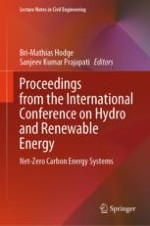This book comprises the select peer-reviewed proceedings of the International Conference on Hydro and Renewable Energy (ICHRE 2022). It aims to provide a comprehensive and broad-spectrum picture of the state-of-the-art research and development in the area of renewable energy technologies, grid integration challenges and opportunities, negative emission technologies, role of distributed energy resources in net zero energy carbon systems, role of hydro energy and pumped storage hydro in power sector decarbonization, policies, and regulations in achieving net zero carbon energy systems, among others. This book provides a valuable resource for those in academia and industry working in the fields of renewable energy, civil engineering, mechanical engineering, among others.
